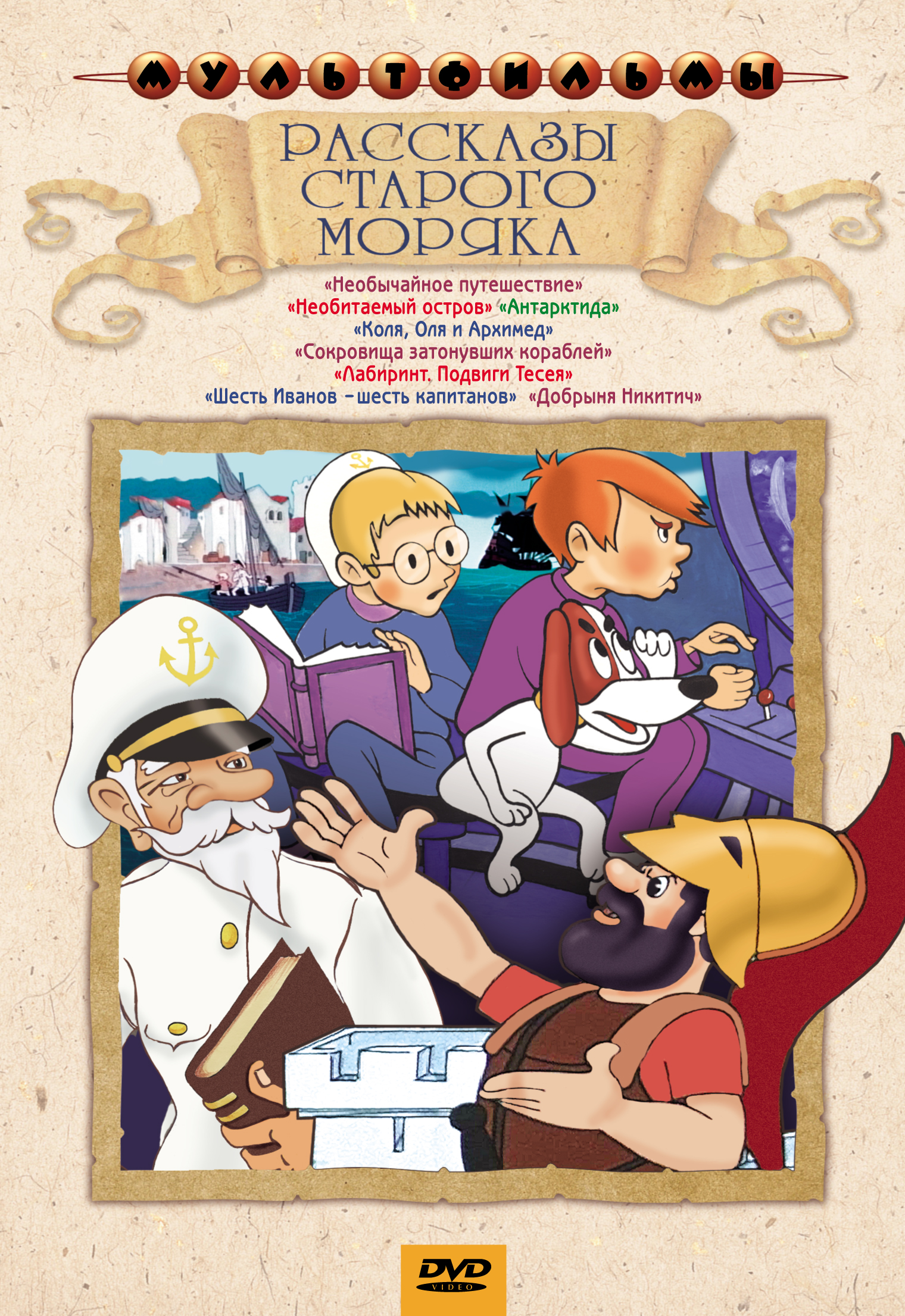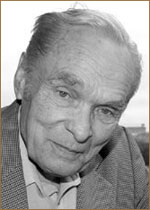Title of the work
Studio / Production Company
Country of the First Edition
Country/countries of popularity
Original Language
First Edition Date
First Edition Details
Коля, Оля и Архимед [Kolya, Olya and Archimedes (Kolia, Olia i Arkhimed)]. Directed by Yuri Prytkov. Script by Leonid Zavalniuk. Composer Evgeny Ptichkin. Moscow: Soyuzmultfilm, 1972.
The movie was released on DVD as part of a collection of animations Веселые жмурки [Funny Blind-Man’s-Buff (Vesёlye zhmurki)] by “Soyuz” studio and a collection Рассказы старого моряка [Tales of an Old Sailor (Rasskazy starogo moriaka)] by Film Video Association “Крупный план” [Close-up (Krupnyĭ plan)].
Running time
Date of the First DVD or VHS
Available Onllne
The movie is available on the Soyuzmultiflm youtube channel (accessed: August 17, 2018).
Genre
Animated films
Educational films
Hand-drawn animation (traditional animation)*
Short films
Target Audience
Children (6+)
Cover

Courtesy of the Film Video Association “Крупный план” [Close-up (Krupnyĭ plan)] close-up.ru, accessed: August 17, 2018).
Author of the Entry:
Hanna Paulouskaya, University of Warsaw, hannapa@al.uw.edu.pl
Peer-reviewer of the Entry:
Elżbieta Olechowska, University of Warsaw, elzbieta.olechowska@gmail.com
Susan Deacy, University of Roehampton, s.deacy@roehampton.ac.uk

Courtesy of www.kino-teatr.ru database (accessed: June 25, 2018).
Yuri Prytkov
, 1920 - 2011
(Director)
Soviet director of animation movies. A veteran of WWII, Yuri Prytkov worked at Soyuzmultfilm studio and was popular especially for his movies about school children Наш друг Пишичитай [Our Friend Write-and-Read], and Ох и Ах [Oh and Ah] series. He produced few educational movies for children.
From 1970s he worked on animations together with his wife Tatsiana Sazonova (1926-2011). During their retirement, they worked as book illustrators.
Bio prepared by Hanna Paulouskaya, University of Warsaw, hannapa@al.uw.edu.pl

Portrait, courtesy of www.kino-teatr.ru database (accessed: June 28, 2018).
Leonid Zavalniuk
, 1931 - 2010
(Scriptwriter)
A poet, writer and a screen-writer for animations, Zavalniuk wrote many lyrics for Soviet pop singers such as Sofia Rotaru, Alla Pugacheva and Valery Leontiev. He was a screen-writer for animated movie directors such as Yuri Prytkov, Lev Milchin, Piotr Nosov, Yuli Karasik, Zinaida and Valentina Brumberg, as well as Andrei Razumovsky.
Bio prepared by Hanna Paulouskaya, University of Warsaw, hannapa@al.uw.edu.pl
Casting
Maria Vinogradova,
Olga Gromova,
Aleksei Gribov,
Anatoly Papanov
and others.
Adaptations
Leonid Zavalnik. Коля, Оля и Архимед [Kolya, Olya and Archimedes (Kolia, Olia i Arkhimed)], ill. by Tatsiana Sazonova and Yuri Prytkov. “Сказки-Мультфильмы” ["Fairytales-Animations" ("Skazki-Multfil'my")]. Moskva: AST, Astrel, 2006 (ISBN: 5170382561, 5271144100).
Summary
This is a popular scientific animation for children about Archimedes and his discoveries. The story is set in Moscow and in ancient Greece. The main characters, contemporary children Kolya and Olya, get to ancient Syracuse during the Second Punic War, meet the great scientist and witness life of the ancient city.
The story starts in a contemporary flat in Moscow, where Kolya is studying. We see a lot of books on his table (an open one has the name and portrait of Archimedes), a map of Sicily and a map of the Moon. He is disturbed by a washing machine jumping into the room and followed by Olya, his older sister. When the machine stops, the girl finds a screw in it and asks Kolya “What’s this?” Kolya, calming her, answers that this is the Archimedes’ screw. Another object found in the machine is a slingshot, so the girl asks her brother sarcastically, if this slingshot belongs to Archimedes as well. The boy counters that it is not a slingshot but a visual aid needed to show the mechanism of a catapult. Olya does not understand the word and Kolya makes fun of her and accuses of not knowing the Greek scientist. To that Olya replies reciting Archimedes’ principle. The bantering ends with Kolya telling Olya about an essay on Archimedes he was working on. The children are suddenly transferred to ancient Syracuse, where they meet Archimedes and get information about some of his various discoveries.
The following narration consists of six mini stories connected to objects the children see when traveling through the city. These stories concern:
- a catapult that allows a missile to fly a distance of 2000 steps;
- a lever that makes it possible to refloat a galley that run aground (the quoted phrase: “Give me a place to stand on, and I will move the Earth.” [Plut. Vitae parallelae: Marcellus, 14]);
- Archimedes’ screw working as a pump;
- Archimedes’ principle in the context of Hiero’s II crown (Eureka! [Vitr. De architectura, 9.10]);
- usage of Archimedes’ engines on long and short distances during the 214-212 BCE siege of Syracuse by the Romans (Plut. Vitae parallelae: Marcellus, 15).
Approximation of pi by Archimedes is also mentioned in the story.
All the mechanisms are described with pictures and schematics.
The story ends with the capture of Syracuse by the Romans with the help of two soldiers disguised as a horse, an obvious allusion to the Trojan horse. The troops start to destroy the city and they look for Archimedes, who sits before his house reflecting on mathematical drawings in the sand (Plut. Vitae parallelae: Marcellus, 19). Kolya and Olya are worried about the scientist and warn him about the danger (“Comrade Archimedes!”). Then, standing on the roof, they shout to the Romans ordering them to go away. A lightning strikes, the Romans flee and the children find themselves shouting in their flat in Moscow. (We do not see the death of Archimedes.)
Olya asks what was the real end of the story. Kolya does not answer the question but tells the girl to read the book to find all the answers.
Analysis
Presenting ancient Greece as the cradle of learning was a highly popular theme in the Soviet Union. Schoolbooks contained information about ancient inventors and philosophers in far greater measure than about mythology or even literature of Greece and Rome. This animation is an example of an educational movie of this kind.
Children’s characters are presented in an idealistic manner. They do not wear pioneer ties but behave as obedient pupils, eager for knowledge. Their image corresponds to the standard image of pioneers. In the beginning of the movie Olya suspects Kolya to be a “normal” child, who could be responsible for the washing machine damage. But Kolya behaves as an exemplary student, not as a naughty child. Olya performs the usual female tasks at home and knows less than Kolya (about Archimedes’ field), at the same time she has memorized all the principles she would have to know at school. This is a typical image of a model Soviet schoolgirl, who would have good marks, but not necessarily a deeper understanding of the subjects. In the end of the movie the kids show compassion to Archimedes and try to stop the Roman army by shouting and giving orders, behaving like gods or at least like dei ex machina. On the battlefield the children never show fear for themselves – it seems that they are aware of being in a tale and not in a real danger.
Kolya starts his story with the words: “You see, all this happened in Sicily, during the Second Punic War, when merciless Rome attacked the peaceful Greek city of Syracuse.” The choice of words is usual for a Soviet war narrative, especially in the context of WWII.
At some point Archimedes asks the children who they are. They say that they came from Moscow, from the twentieth century (forgetting differences in chronological systems used in the time of Archimedes). Surprised, Archimedes asks if he is remembered there. The pupils confirm it to his pleasure: “Good, being remembered by posterity is a great reward!”
The animation is drawn in bright, pleasant colours, attractive for children. There are a few children’s songs and jokes. The movie contains a lot of details from the Greek and Roman world that are not discussed in the movie. For example, Syracusan soldiers form at some point a mini testudo. They are armed in a way that seems suitable, however the movie’s art director (and Prytskov’s wife), Tatsiana Sazonova, says that it was difficult to draw historically plausible weapons because of lack of information.* She mentions consultation with “an author of a monograph about Archimedes”, but does not provides his name. The city is built on hills and is full of temples, small white houses and narrow streets. It contains also one female statue with a laurel (Nike?) that will be destroyed during the siege.
* Tatsiana Sazonova. Нам говорили, что мы сидим на шее у государства [We were Told We are Mooching the State] (interview with Sergei Kapkov for animator.ru), available at animator.ru (accessed: August 17, 2018).
Further Reading
IMDB entry (accessed: August 17, 2018).
Profile at kinopoisk.ru (accessed: August 17, 2018).
Profile at kino-teatr.ru (accessed: August 17, 2018).
Profile at animator.ru (accessed: August 17, 2018).
Lurie, Salomon, Архимед [Archimedes], Moscow-Leningrad: Izdatelstvo Akademii Nauk SSSR, 1945.
Sazonova, Tatsiana, Нам говорили, что мы сидим на шее у государства [We were Told We are Mooching the State] (interview with Sergei Kapkov for animator.ru). available at animator.ru (accessed: August 17, 2018).
Addenda
The Remaining Production Credits:
art director – Tatsiana Sazonova,
animators – Oleg Safronov, Ivan Davydov, Viktor Shevkov, and others,
sound director – Boris Filchikov,
camera man – Mikhail Druian.


